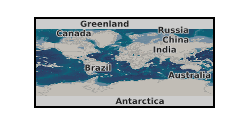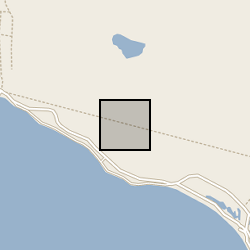2016
Type of resources
Available actions
Topics
Keywords
Contact for the resource
Provided by
Years
Formats
Representation types
Update frequencies
Scale
Resolution
-

This poster on the UKCCSRC Call 1 project Multiphase flow modelling for hazard assessment of dense phase CO2 pipelines containing impurities was presented at the CSLF Call project poster reception, London, 27.06.16. Grant number: UKCCSRC-C1-07. The aim of the project is to develop and validate experimentally a heterogeneous flow model for predicting the transient depressurisation and outflow following the puncture of dense-phase CO2 pipelines containing typical impurities. Given that CO2 is an asphyxiant at high concentrations, this information is pivotal to assessing all the hazard consequences associated with CO2 pipeline failure, including fracture propagation behaviour, atmospheric dispersion, emergency shutdown valve dynamics and emergency blowdown.
-

The dataset contains oxygen and carbon isotope measurements from multiple-shell samples of the ostracod Heterocypris punctata, from Core FP2 taken from Freshwater Pond, Barbuda. A chronology for the core is provided by radiocarbon dates. The data, which are further described in Burn et al. (2016) The Holocene, 26(8), 1237-47, provide a proxy for changing rainfall patterns for the period 2000-1555 CE.
-
Airborne atmospheric measurements from core and non-core instrument suites data on board the FAAM BAE-146 aircraft collected for COSMICS - Cold-air Outbreak and sub-Millimetre Ice Cloud Study project.
-
Airborne atmospheric measurements from core and non-core instrument suites data on board the FAAM BAE-146 aircraft collected for Interaction of Convective Organization and Monsoon Precipitation, Atmosphere, Surface and Sea (INCOMPASS) project.
-
Airborne atmospheric measurements from core and non-core instrument suites data on board the FAAM BAE-146 aircraft collected for FAAM Test, Calibration, Training and Non-science Flights and other non-specified flight projects (Instrument).
-
Hyperspectral remote sensing measurements using the ARSF Rollei Digital Camera and ARSF Optech Airborne Laser Terrain Mapper 3033 LIDAR instruments onboard the NERC ARSF Dornier Do228-101 D-CALM Aircraft for the AIMWETLAB - Aerial imaging of the wetlands of Lake Balaton and the Kis-Balaton (EUFAR10_01) project (flight reference: 2010_234e). Data were collected over the Balaton Peninsula, Hungary area.
-
Airborne atmospheric measurements from core instrument suite data on board the FAAM BAE-146 aircraft collected for NCAS general FAAM flying (SeptEx, Winter 2010) (Oil and Gas) project.
-
The Soil Moisture CCI 'Combined' dataset is one of the three datasets created as part of the European Space Agency's (ESA) Soil Moisture Essential Climate Variable (ECV) CCI project. The product has been created by merging the "Active" and "Passive" datasets which were created for the project, these being respectively fusions of scatterometer and radiometer soil moisture products derived from the AMI-WS, ASCAT, SMMR, SSM/I, TMI, AMSR-E, WindSat, and AMSR2 satellite instruments. The v02.2 product, provided as global daily images in NetCDF-4 classic file format, presents a global coverage of surface soil moisture at a spatial resolution of 0.25 degrees. It is provided in volumetric units [m3 m-3] and covers the period (yyyy-mm-dd) 1978-11-01 to 2014-12-31. For information regarding the theoretical and algorithmic base of the product, please see the Algorithm Theoretical Baseline Document version 2.0 or the paper by Wagner 2012, both available in the documentation section. An overview of all known errors associated with it is provided in the Comprehensive Error Characterization Report. Other additional reference documents and information relating to the dataset can also be found on the CCI Soil Moisture project web site or within the Product Specification Document. The data set should be cited using all three of the following references: 1. Liu, Y. Y., W. A. Dorigo, et al. (2012). "Trend-preserving blending of passive and active microwave soil moisture retrievals." Remote Sensing of Environment 123: 280-297. 2. Liu, Y. Y., Parinussa, R. M., Dorigo, W. A., De Jeu, R. A. M., Wagner, W., van Dijk, A. I. J. M., McCabe, M. F., Evans, J. P. (2011). Developing an improved soil moisture dataset by blending passive and active microwave satellite-based retrievals. Hydrology and Earth System Sciences, 15, 425-436 3. Wagner, W., W. Dorigo, R. de Jeu, D. Fernandez, J. Benveniste, E. Haas, M. Ertl (2012). Fusion of active and passive microwave observations to create an Essential Climate Variable data record on soil moisture. ISPRS Annals of the Photogrammetry, Remote Sensing and Spatial Information Sciences (ISPRS Annals), Volume I-7, XXII ISPRS Congress, Melbourne, Australia, 25 August-1 September 2012, 315-321
-
This dataset comprises gridded limb ozone monthly zonal mean profiles from the ODIN/SMR instrument. The data are zonal mean time series (10° latitude bin) and include uncertainty/variability of the Monthly Zonal Mean. The monthly zonal mean (MZM) data set provides ozone profiles averaged in 10° latitude zones from 90°S to 90°N, for each month. The monthly zonal mean data are structured into yearly netcdf files, for each instrument separately. The filename indicates the instrument and the year. For example, the file “ESACCI-OZONE-L3-LP-SMR_ODIN-MZM-2008-fv0001.nc” contains monthly zonal mean data for ODIN/SMR in 2008.
-
This dataset contains Radiances and Brightness Temperature data from the Sea and Land Surface Temperature Radiometer (SLSTR) aboard the European Space Agency (ESA) Sentinel 3A Satellite. Sentinel 3A was launched on the 16th February 2016. The primary mission objective of the SLSTR instrument is to extend the long-term consistent set of global Sea Surface Temperature (SST) measurements. In addition, SLSTR using a suite of visible and infrared radiance measurements provides land surface temperature, active fire monitoring, ice surface temperature, cloud, atmospheric aerosol, land surface, forestry and hydrology products in support of Copernicus services. Data are provided by ESA and are made available via CEDA to any registered user.
 NERC Data Catalogue Service
NERC Data Catalogue Service